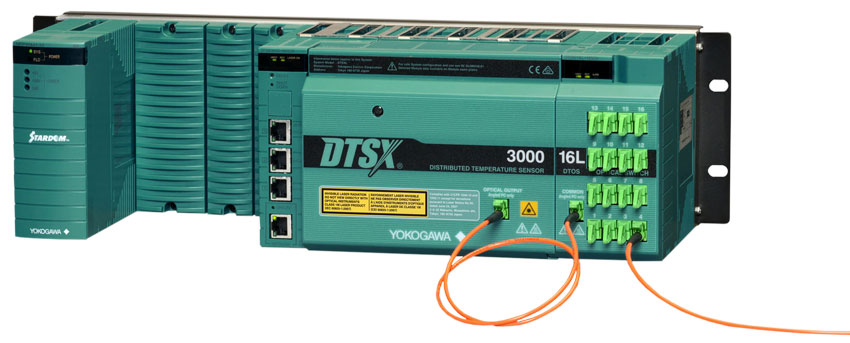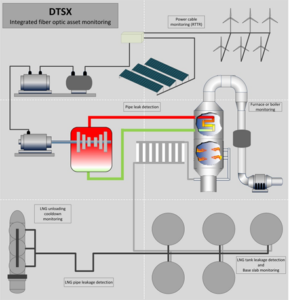If the temperature profiles of your processes and assets are key indicators, then you’ve most likely been using a variety of measurement methods in the past, such as spatially distributed sensors or thermal cameras.
Yokogawa’s optical fiber temperature sensing systems – in which the data acquisition station (DTSX series) is the central component – are an attractive alternative. They allow you to capture the temperature profiles of your processes and assets directly and continuously, and integrate the measurement technology into your existing automation environment with just one Ethernet interface. This opens up new opportunities and hence new applications like liquid level measurements via vessel surfaces, temperature monitoring in reactors or monitoring for mechanical component failure.
Only one fiber required
Optical fiber temperature sensors are a central feature of any industrial system alongside the data acquisition station (DTSX series). In the simplest configuration, a single-channel sensing unit is connected to an optical fiber temperature sensor. Only one fiber is required – and it doesn’t even have to be returned to the sensing unit. To carry out loop measurements, you just connect the two ends of the fiber to an optical switch module. Then, if the temperature sensor is damaged (and the fiber itself is broken), the sensing unit carries on measuring at both ends up to the break.
So how does the sensing unit work? It generates a continuous laser pulse which is coupled into the temperature sensor. This pulse acts as an excitation signal, which propagates all the way down the fiber. The scattered light – known as backscatter – is the relevant signal for measurements: it is generated by the excitation signal on the fiber sheath and guided back to the sensing unit via the modes of the optical fiber cable. The modes serve here as light rows, which direct the light to the data acquisition station. In a multi-mode setup, the light is guided by several of these light rows, which is why we recommend our multi-mode data acquisition station for the majority of applications. We can also supply a single-mode version if necessary. The sensing unit analyzes part of the scattered light according to the Raman scatter principle, then calculates the complete temperature profile along the fiber based on the temperature induced intensity change which is determined there (up to 30,000 temperature measuring points per fiber).
 Modular design
Modular design
The sensing units have a modular design and can be retrofitted with optical switch modules and / or a PLC if desired. Up to 16 fibers with a sampling resolution of 10 to 200 cm can be connected to a sensing unit.
If you’d like to learn more, we’d be very pleased to welcome you to our DTSX seminar on November 6th and 7th, 2018 at our Training Center in Ratingen. You can find all essential information here.
Do you have any questions, observations or suggestions upfront regarding optical fiber temperature sensing?
If so, feel free to write a comment.
SBA, ASI, PAT or piano playing – they’re all based on the nature of learning


 Modular design
Modular design

